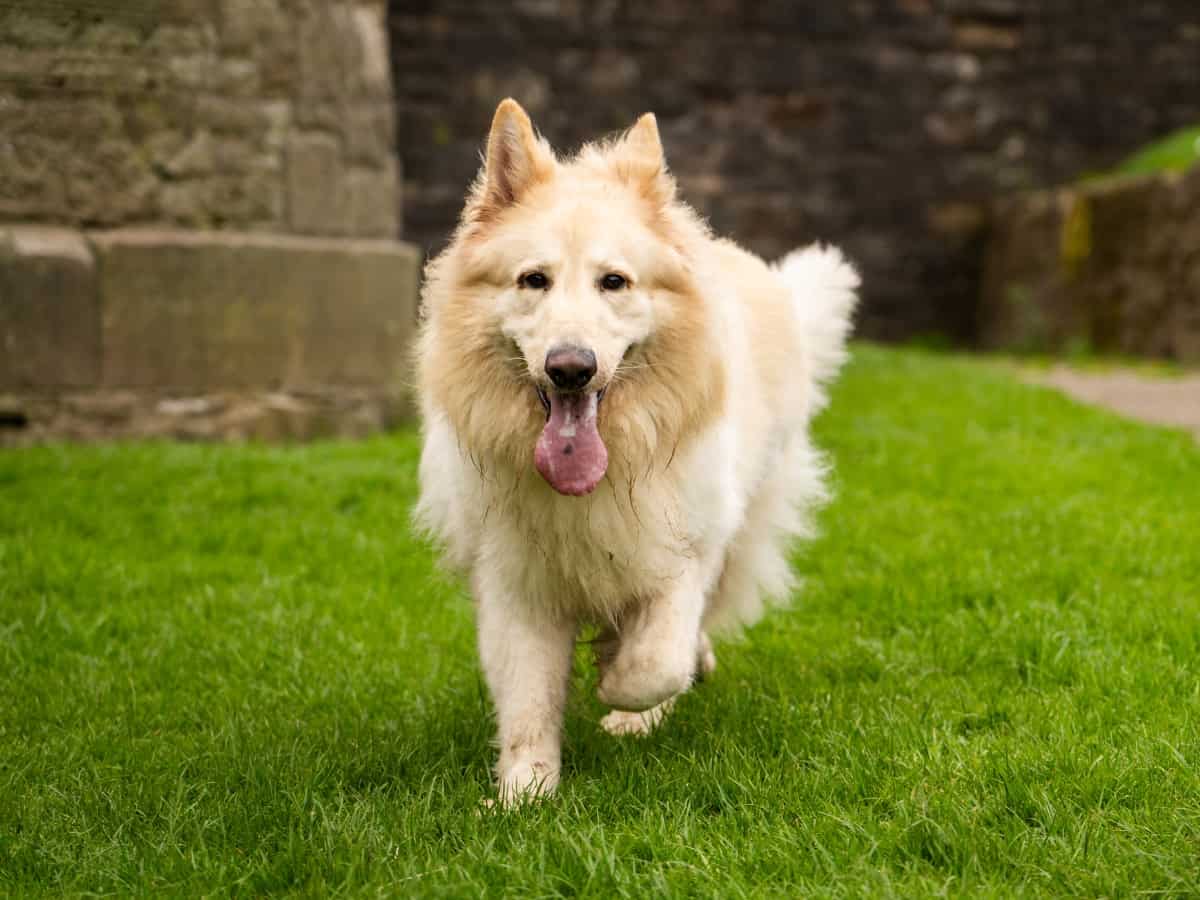Separation anxiety in German Shepherds is a significant behavioral issue that can lead to long-term health consequences, even when your dog is left alone for brief periods. Witnessing your German Shepherd grappling with separation anxiety can be distressing for any pet owner.
In this comprehensive guide, we delve into why German Shepherds are particularly susceptible to separation anxiety and how to identify its signs and symptoms.
But our exploration doesn’t stop there. You’ll also discover:
- The underlying causes of separation anxiety in German Shepherds.
- Effective prevention strategies for separation anxiety in this breed.
- Methods to alleviate and stop separation anxiety in German Shepherds.
- Training techniques specifically tailored for German Shepherds with separation anxiety.
- Additional treatment options and approaches.
If you’re seeking solutions to help your German Shepherd overcome separation anxiety, this guide offers the insights and strategies you need.
Let’s begin!

Do German Shepherds Get Separation Anxiety?
Separation anxiety, also known as separation-related behavior (SRB), is behavior that only happens when a dog is separated from its owner, becomes distressed, and exhibits behavior problems.
The dog cannot cope with loneliness and separation and worries that when you’re gone, you’ll never return.
German Shepherds do get separation anxiety and are more prone than many breeds. It occurs because they are a loyal, protective, and affectionate breed that forms an intense bond with their owner from early puppyhood.
Despite their somewhat intimidating features, many cannot tolerate being alone.
We mustn’t forget that humans bred dogs to be highly social and to interact with us, whether for work or companionship.
For example, if we look at the history of the German Shepherd, they were initially bred as herding dogs and spent day and night with their owners, rounding up and protecting the livestock.
These traits are still present today, so it’s no wonder the German Shepherd is prone to separation anxiety, such is their strong desire to be with and protect their family!
Causes of Canine Separation Anxiety
If your German Shepherd has suddenly started suffering from separation anxiety, you may wonder what has caused it other than the breed’s disposition.
Causes of separation anxiety in German Shepherds are insufficient early socialization and training, hyper attachment to their owner, and trauma such as abuse, abandonment, or neglect.
A change of owner, environment, or routine is also a cause, and shelter dogs are certainly more prone.
- Insufficient early socialization and training. As soon as you get your pup, you need to socialize and train him. He needs to be exposed to as many different stimuli as possible, as it will allow him to be calm and confident around other people, dogs, and unfamiliar places.
- Hyper attachment to their owner. Most dogs have separation anxiety because of their intense bond with you. You need to get your young pup used to being alone, as being around him too much strengthens the bond far too heavily, and this can lead to him being fearful, lonely, and frustrated every time you walk out of the door.
- Trauma, abuse, neglect, or abandonment. Separation anxiety is more common with those who have suffered a traumatic experience and is more prevalent with adopted dogs from shelters. Unfortunately, these dogs may also suffer from post-traumatic stress disorder (PTSD), of which symptoms are similar.
- Change or loss of an owner, change of environment, or routine. Examples are a bereavement, a house move, or a significant change in their routine, such as an owner changing working shifts. Dogs are creatures of habit and thrive on routine, from feeding times to daily exercise.
It is often reported that separation anxiety can be caused when puppies are removed prematurely from their mother (premature weaning). However, this does not appear to be the case:

Separation Anxiety Symptoms
Puppies under five months old will naturally display some of the signs and symptoms of separation anxiety, such as chewing and potty accidents; however, this is not to say they suffer from separation anxiety.
It’s important to distinguish between this normal puppy behavior and something more serious.
So, how do you know if your German Shepherd has separation anxiety?
In German Shepherds, symptoms of separation anxiety are panting, drooling, howling, barking, sweating from the paws, and dilated pupils.
Once alone, they may continue with excessive vocalizations and engage in destructive behaviors such as chewing, digging, attempting to escape, or increased potty accidents.
Initial symptoms will often manifest as you prepare to leave, and your German Shepherd will start to stress.
This is known as departure cue anxiety. When you return, the welcoming behavior displayed by your dog is greatly exaggerated, and he’ll be difficult to calm down.
Here are some of the most common symptoms of separation anxiety that your dog may experience:
- Heavy panting, drooling, or shaking
- Excessive whining, barking, howling, or pacing
- Destructive chewing, digging, or trying to escape
- Aggressive behavior, such as snarling or biting
- Exaggerated reception when you return
- Dilated pupils and sweating from the paws
- Destroying furniture, cushions, etc
- Seizures, muscle spasms, or confusion
- Inappropriate urinating or defecation
- Increased heart rate for extended periods
- Tense muscles for longer than 20 minutes
- Depression that causes him to hide
In extreme separation anxiety, your German Shepherd may not be interested in playing with his favorite toys; even the interactive ones stuffed with tempting peanut butter are no interest!
In addition, he may not wish to eat or drink and may suffer from vomiting and diarrhea or eating his own poop (coprophagia).
Unfortunately, too much anxiety and stress are not good for your German Shepherd’s health. Like humans, excessive stress and anxiety can cause your dog to suffer from high blood pressure and heart disease.
Other health issues that may arise include:
- Digestive problems
- Anorexia
- Stomach ulcers
- Depression
- Obsessive-compulsive disorder (OCD)
Anxiety and stress shouldn’t be dismissed when it comes to your dog’s health, and that’s why it’s important to learn what you can do to prevent, stop, and eliminate it. If you’re unsure or worried, it’s a good idea to have your German Shepherd checked over by your vet.
Learn More About Separation Anxiety in German Shepherds Here…
How To Stop Separation Anxiety in German Shepherds
Although German Shepherds are prone to separation-related behavior, you may prevent its development and stop it by implementing a few strategies.
To stop separation anxiety in German Shepherds, socialize and train your dog from an early age and exercise him before leaving.
Leave him where he feels relaxed and comfy, keeping departures low-key, and leave lots of toys and distractions. Practice short trips first and never use punishment.
Let’s now dive into more detail on these techniques and others to prevent and stop separation anxiety in your German Shepherd…
1. Socialize and Train Your GSD While Young
Protective factors include ensuring a wide range of experiences outside the home between 2-10 months. Puppies should be exposed to different stimuli as often as possible from an early age.
Start by introducing your pup to your family and friends, taking him to many different places where he can encounter other dogs and experience various scenarios, such as traffic noise, lots of people, children playing, etc.
Puppies need a routine and a training schedule. Check out my article, German Shepherd Puppy Training Schedule, for a month-by-month plan on what to teach and when.
If you have adopted an older dog or a rescue who has had little or no training, don’t worry, as it’s never too late to train your GSD due to their intelligence and immense desire to please. Just understand it may take a little longer. For puppies and older dogs, obedience classes are always an excellent idea.
2. Exercise Your Dog Sufficiently
German Shepherds are high-energy dogs and need a lot of daily exercise. Exercise helps to keep them healthy and prevents boredom.
This study found that dogs with separation anxiety exercised less compared with dogs that did not have separation anxiety. The same study also found unsocialized dogs were more at risk (see above).
Always exercise your German Shepherd before you leave him. He will be tired and will want to sleep while you are away. A tired dog is also a happy dog. When you return home, exercise him again.
A healthy adult German Shepherd needs at least two periods of 45 to 60 minutes of daily exercise. It’s also important to allow your dog to run off-leash and play games such as fetch or frisbee, as this will mentally stimulate him.
Walking him on the lead every day without any variety will not be sufficient. Remember, the breed was created with a job to do, and they need lots of stimulation.
Puppies have different exercise requirements as they are still growing, and too much or the wrong type of exercise can harm pups. So, here are my 7 fun ways to exercise a German Shepherd puppy.

3. Leave Your Dog in a Comfy and Safe Place
Although German Shepherds can live outside, it doesn’t necessarily mean it’s a better choice, as most prefer to live inside with their family.
If your GSD might prefer to stay in your yard for a few hours, here’s how to easily train a GSD puppy to stay outside. However, some indoor dogs get separation anxiety more often if left outside because they’re not used to the environment, so break them in gently!
If your German Shepherd stays indoors and is crate trained, you should leave him in his crate as he will feel safe and secure. However, a point to note is that some dogs with already-developed separation anxiety do not do well in a crate.
Other options are to leave him in a designated room, use dog gates to segregate an area, or use a playpen.
4. Keep Departures and Arrivals Low Key
Do not overly fuss your German Shepherd when leaving him. The purpose of separation anxiety training (which we’ll cover later in the article) is for your dog to maintain as much calm as possible.
Making a big fuss about departures and arrivals detracts from this purpose. The same applies when you return, so wait a few minutes before petting him and showing him affection.
5. Leave Interesting Toys and Other Distractions
If you leave plenty of interesting toys around, your GSD won’t be as anxious as he will have something to entertain himself.
Of course, you can’t go wrong with the KONG set of toys, such as the KONG Classic from Amazon. It makes a great chew toy, has a crazy fun bounce, and you can fill it with peanut butter or treats for your doggo to enjoy.
Note: Clicking the above link(s) will take you to Amazon or an online store where we have an affiliate relationship. If you make a purchase, we may earn a commission at no additional cost to you.
I also recommend an interactive toy like the Outward Hound Brick Interactive Treat Puzzle Toy. Puzzle toys are mentally and physically stimulating, which helps to reduce stress and anxiety.
This cool toy will keep your pup busy while he tries to find all the tasty treats. It encourages positive play and gets thousands of great reviews.
Another tip is to leave the TV on or have some gentle music playing. It’s also better if you try to keep to a schedule; that way, your dog will get to know when he can expect your return.
6. Practice Short Trips First
Even short one-hour spells away from home can stress your German Shepherd when he’s not used to it. So start by leaving him for a few minutes when you bring him home, usually around eight weeks old.
This is a proven technique to stop separation anxiety, as your pup will quickly learn that it’s quite normal to be left alone for a while.
Gradually build this up over the next few weeks, increasing his time alone gradually. A rough guideline is that puppies should be left no more than one hour per month of age up to a maximum of four hours.
You can read more info on how long German Shepherds can be left alone in my guilt-free guide.

Pro Tip! When my German Shepherd was a young pup, even if I had nowhere to go, I would sneak upstairs to another room and stay silent for a few minutes so that she could get used to being alone in her crate.
7. Arrange for Visitors to Call
If your German Shepherd can be entertained or exercised while you’re away, he will be less likely to miss you and stress about it. He’ll also know that he won’t be left alone for too long each day if you have a friend or relative call around.
However, you should avoid this step if your German Shepherd is beginning to feel quite comfortable alone.
It should only be attempted if your dog is experiencing separation anxiety or you need to be away for more than four hours. Otherwise, you could end up reversing your progress.
8. Show Your GSD Affection – But Not Too Much!
German Shepherds are all about you and will stress very easily! One way to stop separation anxiety in German Shepherds is to show your doggo that you love him and he is important to you.
A GSD can’t break a bond – they are known to bond for life. So if you show your dog affection randomly during the day, this will reassure him that the bond he’s formed with you is a two-way thing and isn’t going away.
However, there is a caveat in that you shouldn’t force him to participate in every activity you do around the house. You should allow him to have some time alone as you might inadvertently be making him too clingy.
A GSD’s strong bond can become a problem if you allow it! Ensure you show him affection at the right times, such as during training or when he deserves praise.
Other ways to show affection, rather than constantly petting, include extra walks or playtime or offering special treats or toys as rewards.
9. Never Punish Your GSD
If you come home to destroyed cushions, scratches on the door, or a chewed table leg, you cannot discipline or punish your pup.
The destructive behaviors associated with separation anxiety are not your dog’s attempt to punish or exact revenge on you for leaving him alone. They are, in fact, part of a panic response.
Disciplining your German Shepherd once you’ve returned home may exacerbate his separation anxiety without teaching him anything new.
You should discipline dogs at the precise moment they perform the unwanted behavior. But why? This is because dogs have a 2-minute short-term memory and will not remember what happened a few minutes earlier, never mind an hour ago!
But they will recall your training commands through associative memory. This means they can remember associations between commands, situations, and behavior. This is why positive reinforcement as a method of training works.
10. Consider a Second Dog to be a Friend
One solution to prevent separation anxiety in German Shepherds is to consider getting a second dog. However, this is a massive commitment, and you need to carefully think about how much extra time, work, and expense it will involve.
If your family is truly set on a second dog, remember that adult German Shepherds often have difficulty accepting new dogs. This problem stems from their intense bond with you.
However, a young adolescent dog will likely receive a new friend with open paws! They’ll be able to play together without you having to worry about your German Shepherd developing separation anxiety.
Warning! If your GSD is already suffering separation anxiety, it’s not a good idea to get a second dog as the anxiety can often be passed onto the newcomer – the new dog may get stressed over his new friend’s behavior!
Instead, you should work to solve your German Shepherd’s anxiety first before bringing a second dog into your home.
What Not To Do!
It isn’t uncommon for German Shepherd owners to try as many ways as possible to help their dog cope with separation anxiety and recover faster. However, it’s essential to note that some methods may work while some may do more harm to them.
Before you begin with the ideal treatment/training to help your German Shepherd overcome separation anxiety, follow the precautions below.
- Don’t introduce a new person to your German Shepherd at this stage. It can lower his recovery rate and add up to his trauma.
- Don’t shout at your German Shepherd when he or she is suffering from separation anxiety. This can increase the nervousness.
- Don’t confuse fear with separation anxiety. Sometimes, there can only be one trigger point to address, and this can get them rid of fear. However, separation anxiety isn’t the same.
- Rework your routine to spend some more time with your German Shepherd.
- Don’t force your German Shepherd to cooperate and recover rapidly. Every dog takes his own pace to recover.
- Don’t underestimate the potential of training. It can reduce boredom, sensitize your absence, and also promote the coping skills of your German Shepherd.
Separation Anxiety Training and Tips
If your German Shepherd suffers from severe separation anxiety or you have adopted a rescue with clear signs of this psychological problem, and the above recommendations are clearly not working, it may be time to start more advanced separation anxiety training.
So, can you train separation anxiety out of a German Shepherd?
You can train separation anxiety out of a German Shepherd. Separation anxiety training consists of behavior modification techniques such as counterconditioning and desensitization, which can be supplemented with medication in the initial phases if the anxiety is severe.
Interestingly, I found some recent research suggesting that understanding the root cause of separation anxiety could be the key to effective treatment.
The research conducted by a team of scientists at the University of Lincoln, UK, stated that separation-related behavior (SRB) should be seen as a symptom of inherent frustrations instead of a diagnosis.
Scientists identified four main forms of distress suffered by dogs in the study:
- The desire to get away from something in the house
- Wanting to get outside
- Reacting to external noises or incidents
- A type of boredom
Counterconditioning
Counterconditioning refers to altering a dog’s emotional response, behavior, or feelings in reaction to a stimulus.
So, in our case, systematic counterconditioning is a training technique whereby you train your dog not to associate “departure cues” that you are about to leave (for example, picking up your keys and putting your coat and shoes on).
The idea is to condition your German Shepherd to look forward to your departure by learning to associate the sound of your keys and other departure cues with getting something pleasant, such as a treat or a toy.
Desensitization
Another training technique is desensitization. This is when you gradually teach your dog to cope with a situation by carefully exposing him to that situation in tiny steps.
For example, you can start by practicing progressive departures of 1-2 minutes when you leave your German Shepherd.
However, you should find your dog’s threshold before doing this. For example, if he starts to panic after just 30 seconds of you leaving, then that is your starting point.
You will start by walking through the door and leaving him for, say, 15 seconds. But, if you know that he starts to exhibit symptoms after 10 minutes, try leaving him for 5 minutes. Do you get me? Slowly but surely is the key.
If you’re unsure how long your GSD lasts before he starts to stress, you can get a doggie camera, such as the Furbo. Doggy cams are excellent for this as you just operate them from your smartphone.
This one has over 20,000 positive reviews, and you can even get it to toss treats to your dog. But that is not for now!
Check Out This Cool Video to Learn More About Counterconditioning and Desensitization…
Be patient and persistent in your training, but if you’re having trouble progressing, you might want to consult a professional dog trainer or behaviorist to help you with these techniques.
How To Treat Separation Anxiety in German Shepherds
As behavior modification training is not a quick solution, you may need to consider additional treatment options, such as conventional or alternative medication, especially if your dog’s anxiety is severe.
To treat separation anxiety in your German Shepherd, consider anti-anxiety medication from your vet whilst you continue behavior modification training.
You can also use dog appeasing pheromone (DAP), which has therapeutic calming effects. CBD oil is also becoming more popular, albeit not clinically proven.
Medication
Prescribed medication such as fluoxetine or clomipramine can help relieve your German Shepherd’s stress and associated symptoms, but it doesn’t tackle the initial cause of the problem.
Medication is only a temporary fix and should always be used with the training techniques described above.
Dog Appeasing Pheromone (DAP)
Another treatment option that has become popular is the use of dog appeasing pheromone (DAP). This is a synthetic copy of the natural comforting pheromone secreted by a dam to reassure her puppies.
Dog-appeasing pheromone has therapeutic effects of calming and reducing some forms of anxiety in both young and adult dogs.
Nonetheless, there has been little research to support the use of DAP for canine separation anxiety, and its long-term effectiveness is unknown. However, this study suggested that DAP improved separation anxiety in hospitalized dogs.
Adaptil is the brand recommended, most trusted, and used by vets and expert animal behaviorists. I have never needed to try this for my German Shepherd. However, if the situation arose, I would try Adaptil as The Merck Veterinary Manual references it.
As always, talk to your vet before trying DAP, but if you think this might help, you can find the Adaptil Dog Calming Diffuser Kit.
Cannabidiol Oil (CBD Oil)
Cannabidiol oil (CBD oil) is a debatable alternative supplement used to treat canine pain, arthritis, and anxiety.
It’s mainly derived from the flowers of the hemp plant, but it doesn’t contain THC, which is the compound that causes the “high” in cannabis users. CBD oil is available in drops, capsules, and various treats.
Some dog owners claim that their dogs benefit from using it as it helps to fight their separation anxiety by relaxing them and keeping them calm when alone.
However, it’s important to note that there is no conclusive scientific data to prove how effective CBD oil is in treating anxiety in dogs.
This study suggested that the main reasons owners chose cannabis products were to use them alongside other therapies and because they were perceived as a natural substance.
Before you give any supplement to your German Shepherd, you should contact your veterinarian for advice.
FAQs
Are there specific breeds prone to separation anxiety?
Research has shown that certain dog breeds, such as the German Shepherd, tend to exhibit separation-related behavior issues more frequently than others. As a loyal and highly intelligent working breed, the German Shepherd has been bred for strong bonds with their human companions.
Consequently, they can be predisposed to developing anxiety when separated from their owners for extended periods. Early socialization and training are especially important to help mitigate potential separation anxiety issues for the breed.
Should I crate my German Shepherd with separation anxiety?
While the crate can provide a den-like safe space, confinement may also exacerbate distress for some dogs. It is generally advisable to consult an animal behaviorist or certified trainer to help assess whether crate use would be beneficial or harmful in an individual case.
Positive reinforcement techniques should be employed to help the dog build comfortable associations with the crate over a period of desensitization training before leaving them alone inside.
How long does it usually take to see improvements in a German Shepherd’s separation anxiety?
As with any behavioral modification program, the length of time needed to see notable progress in treating a German Shepherd’s separation anxiety will vary based on numerous factors, such as the individual dog’s temperament, the severity of symptoms, consistency of training, and environmental stressors.
However, research has found that most owners begin to observe some lessening of anxious behaviors within 2-4 weeks when employing counterconditioning and desensitization protocols daily or several times per week under the guidance of a professional trainer.
While complete resolution may take longer, noticeable improvements emerging after 2-4 weeks of dedicated training are commonly reported. Ongoing management is usually still required.
Key Takeaways
Despite their susceptibility to separation anxiety, it’s entirely feasible to prevent, manage, and alleviate stress in your German Shepherd.
Key points from this guide include:
- Early socialization and training can ward off separation-related issues.
- Gradually acclimate your puppy to alone time.
- Ensure your German Shepherd gets ample exercise before you leave.
- Avoid punishing your dog for separation-related destructive behavior.
- In severe cases, consider behavior modification training.
Patience and consistency are crucial, as behavior modification can span weeks or months, varying with each dog and the severity of the issue.





